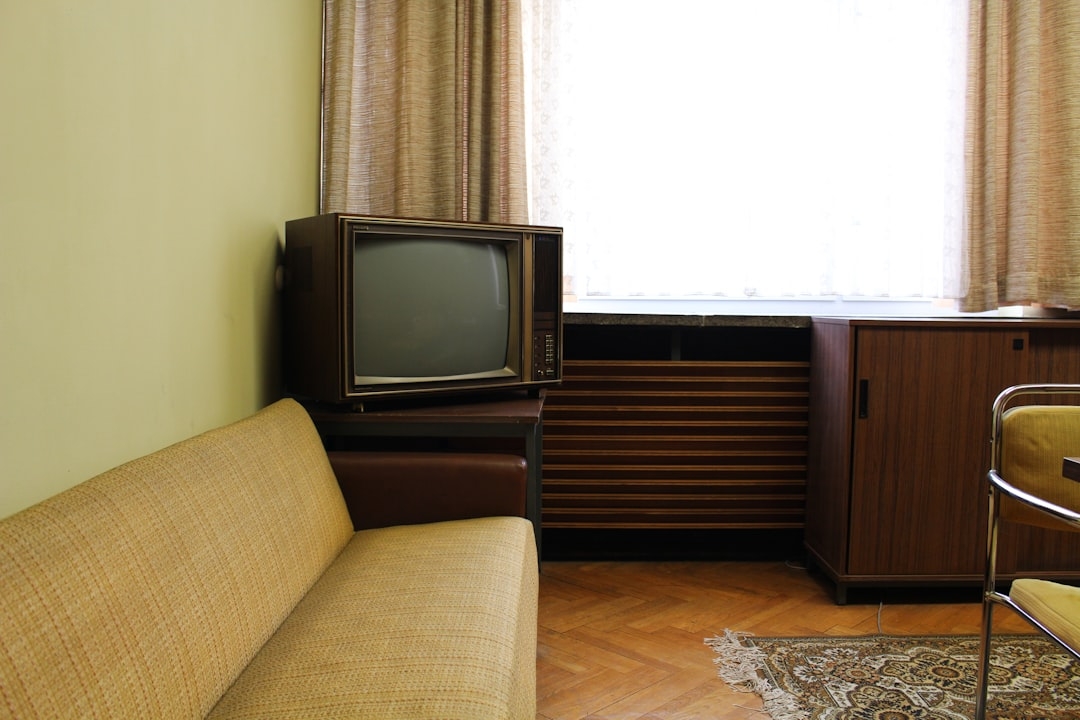

Desde JustClean comprendemos que el desalojo de viviendas en Ger puede ser una tarea difícil. Ya sea por una situación inesperada, te acompañamos en el proceso, con un servicio confiable y sin complicaciones en toda Ger.
Realizamos el vaciado completo de la vivienda, dejando el espacio listo para su siguiente uso, ya sea para una desinfección posterior.
Confía en nuestro equipo para un servicio de vaciado profesional en Ger, seguro y respetuoso con el entorno.
Habla con nuestro equipo ahora o pide tu presupuesto digital sin compromiso. ¡Estamos a tu disposición para el vaciado de pisos y limpiezas especiales!
Realizamos diferentes tipos de vaciado de pisos y casas en Ger y alrededores, adaptándonos a cada necesidad:
En JustClean ofrecemos nuestros servicios de vaciado de pisos y limpieza profesional en toda la provincia de Girona. Llevamos nuestros servicios allí donde los necesites, ya sea para un vaciado por herencia, limpieza post mortem o síndrome de Diógenes.
Aquí tienes una muestra de los municipios donde realizamos vaciados de viviendas:
- Blanes
- Lloret de Mar
- Banyoles
- Roses
- L’Escala
- Calonge i Sant Antoni
- Vidreres
- Castelló d’Empúries
- Sils
- Maçanet de la Selva
- Sant Hilari Sacalm
- Tossa de Mar
- Vilafant
- Porqueres
- Vidrà
- Cornellà del Terri
- Cruïlles
- Serinyà
- Avinyonet de Puigventós
- Garrigàs
- Viladamat
- Cabanes
- Navata
- Borrassà
Si tu municipio no está en la lista, consúltanos igualmente. Ofrecemos cobertura en toda la provincia.
En JustClean ofrecemos servicios de vaciado de pisos y limpieza profesional a todo tipo de clientes. Estos son algunos de los perfiles más habituales: Familias Herederos Intervenciones en viviendas insalubres Gestores de comunidades Agencias inmobiliarias Servicios sociales Confía en JustClean, sea cual sea tu perfil.
Propietarios que buscan un vaciado rápido y sin complicaciones. Nos encargamos de todo para que no tengas que preocuparte por nada.
Acompañamos a los herederos en todo el proceso de vaciado del piso familiar.
Trabajamos en coordinación con servicios sociales si es necesario.
Ofrecemos servicio integral para mantener comunidades limpias y funcionales.
Ayudamos a preparar inmuebles para su venta o alquiler.
Garantizamos un servicio profesional, documentado y seguro.
Retrasar el vaciado de una vivienda puede suponer más costes, estrés y problemas de gestión. Aquí te explicamos por qué es clave no dejarlo pasar: Evitas costes innecesarios Lo dejas listo para comercializar Evitas situaciones de riesgo Evitas conflictos entre herederos Das un paso adelante Vaciar tu piso a tiempo es una inversión en tranquilidad, economía y orden.
Los pisos cerrados y llenos generan gastos mensuales que puedes evitar.
Los agentes inmobiliarios lo podrán mover más rápido en el mercado.
Un piso lleno puede atraer plagas o humedades.
Te ayuda a pasar pàgina i gestionar emocionalment la situació.
Amb JustClean no cal que t’hi capfiquis: nosaltres ho fem tot.
Nuestro objetivo no es solo vaciar, sino hacerlo de forma respetuosa con el entorno. Por eso, aplicamos un proceso de trabajo ecológico en cada servicio: Elegir JustClean es optar por un servicio de vaciado comprometido con el planeta.
No todo va al vertedero: clasificamos para reciclar y reutilizar.
Colaboramos con asociaciones que recogen muebles y electrodomésticos funcionales.
Emitimos justificantes si el cliente lo solicita.
En limpiezas post mortem o de Diógenes empleamos métodos seguros y respetuosos.
Desde JustClean, hemos diseñado un proceso rápido para ofrecerte un servicio de vaciado de pisos en Ger que se adapta a tus necesidades:
1. Primer contacto
Escríbenos directamente para explicarnos tu situación. Vaciado con gestión ecológica Nuestro equipo te atiende sin compromiso.
2. Envío de imágenes o vídeo
Para poder ofrecerte una estimación ajustada, te pediremos que nos compartas imágenes del estado actual del inmueble a través de WhatsApp.
3. Valoración gratuita
En base a las imágenes, te entregaremos un precio justo y competitivo, todo sin compromiso. ¡Rápido!
4. Programamos la intervención
Te damos varias opciones de día y hora, incluyendo horarios ampliados si lo necesitas.
5. Ejecutamos el vaciado
Nuestro equipo acude al lugar puntual y equipado. Vaciamos por completo el piso o casa de forma rápida y segura, dejando el espacio listo para alquiler.
Tan simple como eso, nos ocupamos de todo con JustClean.
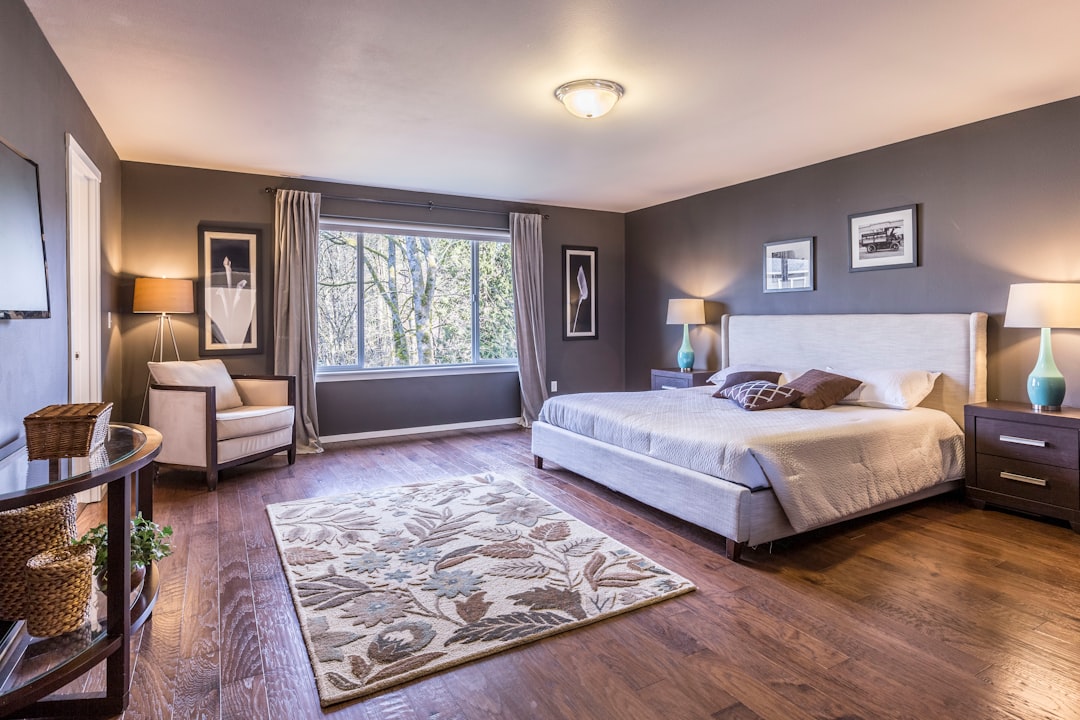
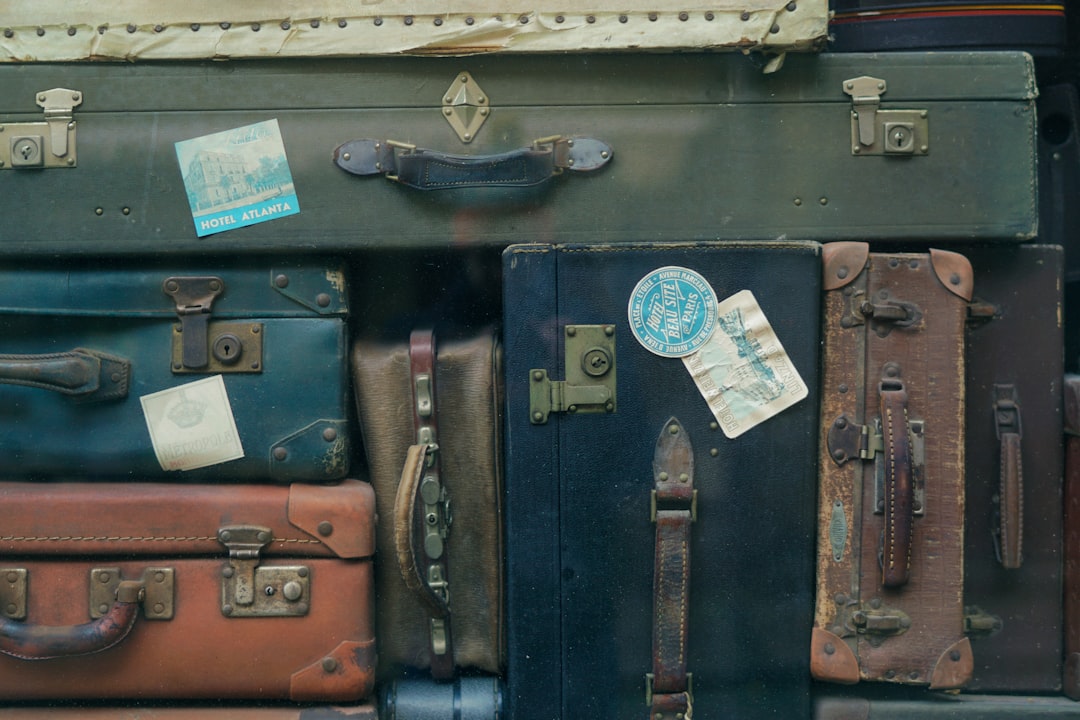
Con JustClean, somos reconocidos por nuestra amplia experiencia en vaciado de pisos y por ofrecer resultados de alta calidad en cada intervención.
Elegir a JustClean es confiar en expertos. Contáctanos sin compromiso y descubre cómo podemos ayudarte.
“Tuve que vaciar el piso de mi madre tras su fallecimiento y no sabía por dónde empezar. JustClean nos ayudó en todo el proceso, siendo muy respetuosos. Presupuesto sin compromiso vaciado Vinieron puntuales, retiraron todos los muebles y dejaron el piso listo para alquilar. ¡Un trabajo excelente!
Laura M. — Figueres (retirada por defunción)
Contraté a JustClean para un vaciado completo tras una situación complicada de síndrome de Diógenes. Actuaron con profesionalismo y empatía desde el primer momento. Incluyeron limpieza profunda y desinfección con ozono. Estoy más que satisfecho por cómo lo gestionaron.
Carlos T. — Salt (vaciado especial)
Necesitaba vaciar el piso antes de empezar una obra y los encontré por internet. Les envié fotos por WhatsApp y el mismo día me enviaron un presupuesto claro. Vinieron al día siguiente y lo hicieron todo en una mañana. Muy recomendables.
Cristina R. — Empresa vaciado pisos con resultados Palafrugell (vaciado previo a obras)
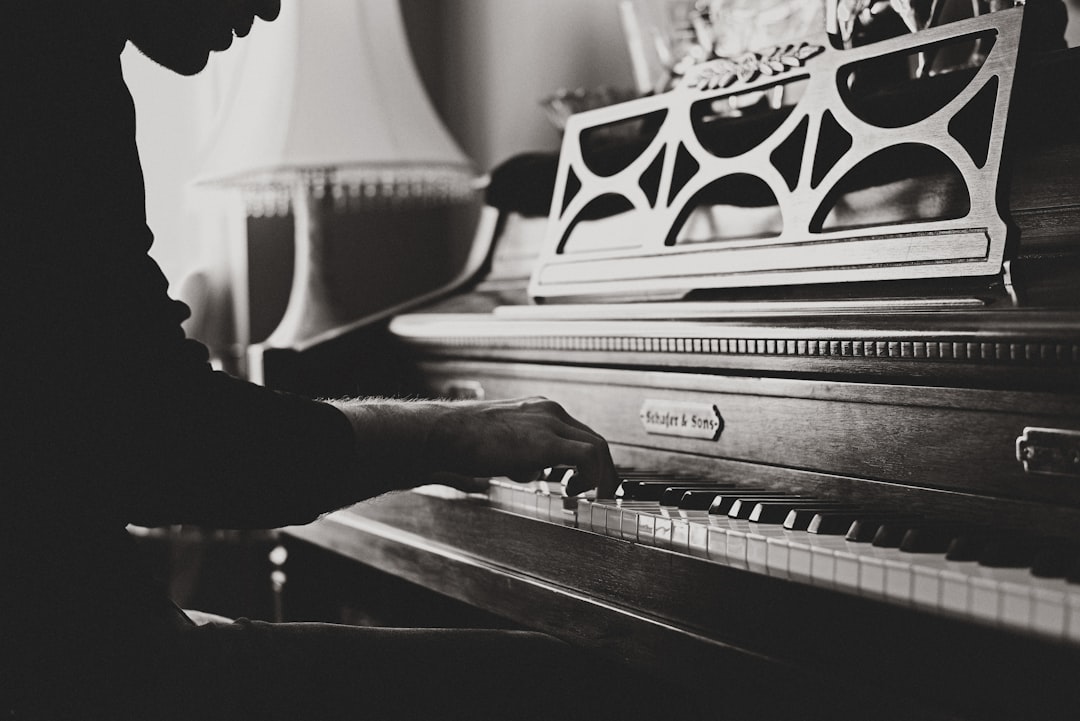

Aquí te presentamos ejemplos reales de vaciados de pisos que hemos llevado a cabo en Ger y alrededores:
El cliente necesitaba vaciar completamente un piso heredado de 90 m². Tras recibir las imágenes, programamos el servicio al día siguiente. Todo quedó listo para la venta del inmueble.
El piso necesitaba una intervención completa tras una defunción. Retiramos muebles, colchones y electrodomésticos antiguos. También aplicamos desinfección con ozono.
La vivienda llevaba años cerrada y llena de residuos. Trabajamos en coordinación con servicios sociales. El piso quedó higienizado y sin rastro de suciedad.
Cada servicio que realizamos está respaldado por nuestra experiencia y profesionalismo. Estas son algunas de nuestras certificaciones y garantías:
Con JustClean tienes la tranquilidad de estar en buenas manos.
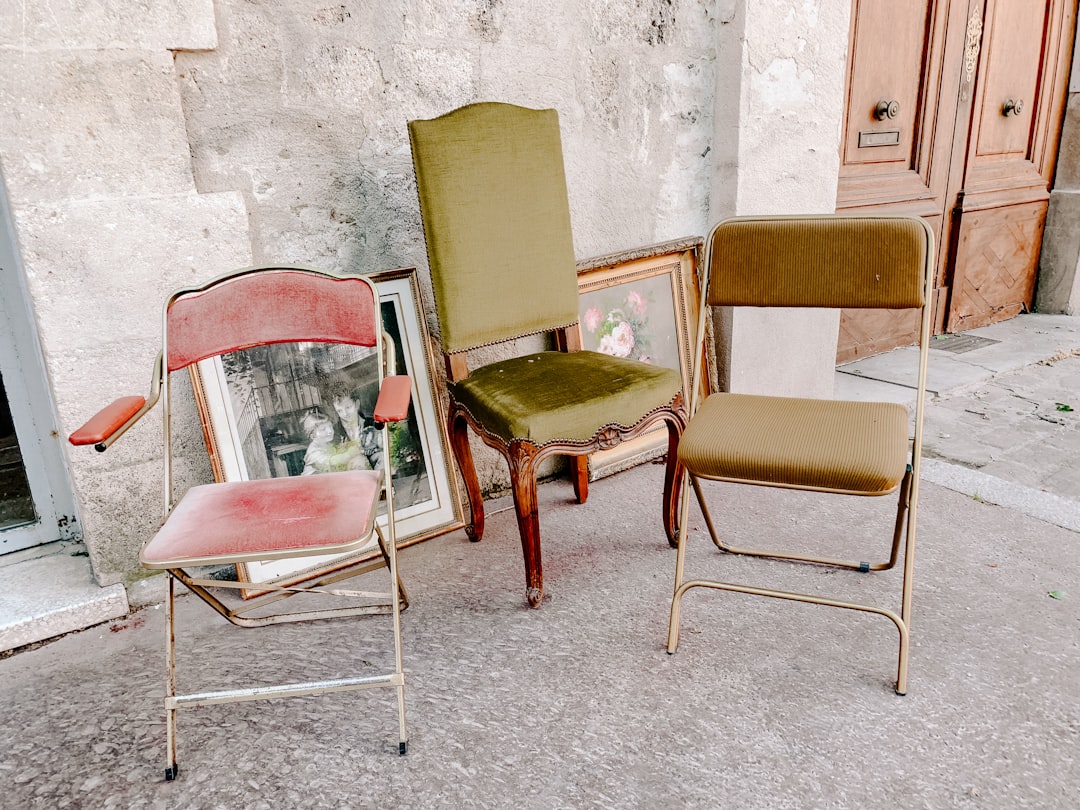

|
Gerona
|
|
|---|---|
|
Municipality
|
|
|
Aerial view
Girona Cathedral
the Onyar
|
|

Flag

Coat of arms
|
|

Location of Gerona
|
|

|
Coordinates: 41°59′04″N 02°49′16″E / 41.98444°N 2.82111°ECountrySpainAutonomous communityCataloniaProvinceGeronaComarcaGironèsGovernment
• MayorLluc Salellas i Vilar (2023) (Guanyem Girona)Area
39.1 km2 (15.1 sq mi)Elevation
76 m (249 ft)Population
100,266 • Density2,500/km2 (6,600/sq mi) • Urban
156,423 (2,020)DemonymsGironí, gironinaArea code+34 (E) + 972 (Gi)Administrative divisions9Websiteweb
Gerona ( Catalan pronunciation: [ʒiˈɾonə] ⓘ; Spanish: Gerona [xeˈɾona] ⓘ) is the capital city of the Province of Gerona in the autonomous community of Catalonia, Spain, at the confluence of the Ter, Onyar, Galligants, and Güell rivers. The city had an official population of 103,369 in 2020 but, the population of the Gerona–Salt urban area is estimated to be about 156,400 (2020).[3] Gerona is also capital of the comarca of the Gironès and the vegueria of Gerona. Since much of the old quarter of this ancient city has been preserved, Gerona is a popular tourist destination. The city is located 99 km (62 mi) northeast of Barcelona.

The first historical inhabitants in the region were Iberians; Gerona is the ancient Gerunda,[4] a city of the Ausetani. Later, the Romans built a citadel there, which was given the name of Gerunda. The Visigoths ruled in Gerona until it was conquered by the Moors in 715. Charlemagne reconquered it in 785 and made it one of the fourteen original counties of Catalonia. It was sacked by the Moors in 827, 842, 845, 935, and 982. Wilfred the Hairy incorporated Gerona into the County of Barcelona in 878.
In the 11th century, Alfonso II of Aragon and I of Barcelona declared Gerona a city. The ancient county became a duchy within the Principality of Catalonia in 1351 when King Peter III of Aragon gave the title of Duke to his first-born son, John. In 1414, King Ferdinand I in turn gave the title of Prince of Gerona to his first-born son, Alfonso. The title is currently carried by Princess Leonor of Asturias, the second since the 16th century to do so.
The earliest documented evidence of a Jewish community in Gerona dates to about 885.[5] The 12th century saw the Jewish community of Gerona flourish, having one of the most important Kabbalistic schools in Europe. The Rabbi of Gerona, Moshe ben Nahman Gerondi (better known as Nahmanides or Ramban) was appointed Great Rabbi of Catalonia. Centered on the Jewish Call (Call Jueu), the Jewish community of Gerona came to an end in 1492,[6] when the Catholic Monarchs outlawed Judaism throughout Spain and Jews were given the choice of conversion or exile (see Alhambra Decree). For 400 years before that time, the Jewish cemetery was located beside the road to France, just north of the old city between the mountain Montjuïc, or hill of the Jews in medieval Catalan, and the river Ter.[5]
Gerona has undergone twenty-five sieges and been captured seven times.[citation needed] It was besieged by the French royal armies under Charles de Monchy d'Hocquincourt in 1653, under Bernardin Gigault de Bellefonds in 1684, and twice in 1694 under Anne Jules de Noailles. During the Third siege of Gerona of the Peninsular War, the city was besieged from May to December 1809 by 35,000 French Napoleonic troops under Vergier, Augereau and Gouvion Saint-Cyr. Continuously under heavy bombardment, Gerona held out obstinately under the leadership of Álvarez de Castro until disease and famine compelled it to capitulate on 12 December. Gerona was the center of the Ter department during the French rule, which lasted from 1809 to 1813. The defensive city walls of the western side were demolished at the end of the 19th century to allow for the expansion of the city, while the walls of the eastern side remained untouched but abandoned.[citation needed]
In recent years[when?], the missing parts of the city walls on the eastern side of the city have been reconstructed. Called the Passeig de la Muralla it now forms a tourist route around the old city.
Gerona was founded in a strategic place, in the natural corridor between the Empordà plain and the Catalan Coastal Depression, therefore connecting by land the northern Costa Brava and France with Barcelona and other southern populations. This corridor is a defile formed by the Ter river between the Gavarres massif and the Catalan Transversal Range.
The Ter river is the most important water course in the region. In Gerona it flows through the north of the town, from southwest to northeast. It is in Gerona where the Ter meets the Onyar, the second largest river in the area. The Onyar crosses the city from south to north and it has historically conditioned the city's development, as catastrophic floods have periodically affected the town since historic times.[7]
Gerona is located in a seismic zone, which means it occasionally has earthquakes throughout the year. Most of them are not felt, and some are felt as a minor vibration or light shaking. The strongest earthquake recorded in Gerona was the magnitude 6.7 Principality of Catalonia 1428 earthquake.
According to the Köppen climate classification, Gerona has a humid subtropical climate (Cfa) transitioning to a Mediterranean climate (Csa), with mild winter daytime temperatures and cool nighttime temperatures, and hot summers. In winter, frost occurs frequently (41.3 days per year from November to March), but snowfall is quite rare. Temperatures in winter can drop to below −2 °C (28 °F)/−3 °C (27 °F), especially during days with thermal inversion. Maximum temperatures in summer above 40 °C (104 °F) are very rare. Average annual rainfall is usually slightly above 700 mm (28 in). The wettest seasons are autumn (September–November) and spring (April–early June). Thunderstorms can occur throughout the year, more frequently in summer, averaging 23.9 days per year. but usually there still is a significant arid period.[8] This can be seen through the natural vegetation around the city, as drought-tolerant oaks (Quercus ilex and, to a lesser extent, Quercus suber and Quercus pubescens) and pines (Pinus pinaster, Pinus pinea and Pinus halepensis) dominate the majority of the plant communities.
| Climate data for Gerona Airport (1991-2020), extremes (1973-present) | |||||||||||||
|---|---|---|---|---|---|---|---|---|---|---|---|---|---|
| Month | Jan | Feb | Mar | Apr | May | Jun | Jul | Aug | Sep | Oct | Nov | Dec | Year |
| Record high °C (°F) | 24.6 (76.3) |
25.8 (78.4) |
29.0 (84.2) |
31.6 (88.9) |
37.3 (99.1) |
43.0 (109.4) |
41.3 (106.3) |
42.5 (108.5) |
37.0 (98.6) |
33.1 (91.6) |
30.0 (86.0) |
23.5 (74.3) |
43.0 (109.4) |
| Mean daily maximum °C (°F) | 13.7 (56.7) |
14.7 (58.5) |
17.4 (63.3) |
19.6 (67.3) |
23.3 (73.9) |
27.8 (82.0) |
30.6 (87.1) |
30.7 (87.3) |
26.6 (79.9) |
22.4 (72.3) |
17.1 (62.8) |
14.1 (57.4) |
21.5 (70.7) |
| Daily mean °C (°F) | 7.5 (45.5) |
8.2 (46.8) |
10.8 (51.4) |
13.1 (55.6) |
16.8 (62.2) |
21.1 (70.0) |
23.9 (75.0) |
24.0 (75.2) |
20.3 (68.5) |
16.5 (61.7) |
11.2 (52.2) |
8.1 (46.6) |
15.1 (59.2) |
| Mean daily minimum °C (°F) | 1.3 (34.3) |
1.6 (34.9) |
4.1 (39.4) |
6.5 (43.7) |
10.2 (50.4) |
14.4 (57.9) |
17.1 (62.8) |
17.2 (63.0) |
14.0 (57.2) |
10.6 (51.1) |
5.3 (41.5) |
2.0 (35.6) |
8.7 (47.7) |
| Record low °C (°F) | −13.0 (8.6) |
−8.2 (17.2) |
−5.8 (21.6) |
−3.0 (26.6) |
0.6 (33.1) |
5.1 (41.2) |
8.0 (46.4) |
8.4 (47.1) |
4.6 (40.3) |
−2.0 (28.4) |
−7.0 (19.4) |
−9.4 (15.1) |
−13.0 (8.6) |
| Average precipitation mm (inches) | 58 (2.3) |
42 (1.7) |
51 (2.0) |
66 (2.6) |
65 (2.6) |
58 (2.3) |
40 (1.6) |
49 (1.9) |
75 (3.0) |
86 (3.4) |
63 (2.5) |
51 (2.0) |
704 (27.9) |
| Average precipitation days (≥ 1 mm) | 4.8 | 4.4 | 5.2 | 7.2 | 7.1 | 5.1 | 3.8 | 5.1 | 6.5 | 6.6 | 5.1 | 4.1 | 65 |
| Average snowy days | 0.2 | 0.5 | 0.1 | 0 | 0 | 0 | 0 | 0 | 0 | 0 | 0 | 0.1 | 0.9 |
| Average relative humidity (%) | 74 | 71 | 70 | 68 | 66 | 60 | 58 | 62 | 70 | 75 | 75 | 76 | 69 |
| Mean monthly sunshine hours | 155 | 167 | 195 | 204 | 229 | 255 | 288 | 273 | 210 | 183 | 153 | 143 | 2,455 |
| Source: Agencia Estatal de Meteorología[9][10][11] | |||||||||||||
Girona is a popular destination for tourists and Barcelona day-trippers - the train journey from Barcelona Sants to Girona takes approximately forty minutes on high-speed trains, eighty with express ones and ninety with regional ones. The old town stands on the steep hill of the Caputxins to the east of the river Onyar, while the more modern section stands on the plains to the west. The city has a number of Art Nouveau buildings including the Farinera Teixidor by Rafael Masó.

The ancient cathedral, which stood on the site of the present one, was used by the Moors as a mosque, and after their final expulsion was either entirely remodelled or rebuilt. The present edifice is one of the most important monuments of the school of the Majorcan architect Jaume Fabre and an excellent example of Catalan Gothic architecture. It is approached in ninety steps. An aisle and chapels surround the choir, which opens by three arches into the nave, of which the pointed stone vault is the widest in Christendom (22 meters). Among its interior decorations is a retable which is the work of the Valencian silversmith Pere Bernec. It is divided into three tiers of statuettes and reliefs, framed in canopied niches of cast and hammered silver. A gold and silver altar-frontal was carried off by the French in 1809. The cathedral contains the tombs of Ramon Berenguer and his wife.
The old fortifications are another popular sight. Historically, these have played a vital role in protecting Girona from invaders for hundreds of years. The city wall of the old town was an important military construction built in Roman times in the 1st century BC. It was thoroughly rebuilt under the reign of Peter III the Ceremonious in the second half of the 14th century. The Roman wall was used as a foundation. At the start of the 16th century, the wall was absorbed into the city. The walled precinct lost its military value. Bit by bit, the wall was degrading, as parts were gradually altered from the inside and the outside. The walls and lookout towers that make up these fortifications are split in two - a small section to the north of the old town and a much larger section to the east and south. It is possible to walk the walls and climb the towers, where visitors can enjoy panoramic views of Girona and the surrounding countryside.

The Collegiate Church of Sant Feliu is noteworthy from an architectural point of view. Its style is 14th-century Gothic, the façade dating from the 18th, and it is one of the few Spanish churches that possesses a genuine spire. It contains, besides the sepulchre of its patron and the tomb of the valiant Álvarez, a chapel dedicated to St. Narcissus, who according to tradition was one of the early bishops of the see.[12]

The Benedictine church of the monastery of Sant Pere de Galligants is in the early Romanesque style, dating to about the year 1130, though the monastery dates to about 950. The monastery slightly predates the Monastery of St. Daniel.

The Plaça de la Independència is one of the best-known and busiest squares in Girona. Located in the Mercadal district in the city centre, it is also known as Plaça de Sant Agustí, after the former Convent of Sant Agustí. Its name refers to the 1808–1814 War of Spanish Independence, part of the larger Peninsular War, against Napoleon Bonaparte.
The interest of the square lies in its 19th-century style, despite its being surrounded by identical austere neoclassical buildings with porches dedicated to the defenders of the city of Girona during the 1808 and 1809 sieges.
However, the symmetrical proportions of the square correspond more to contemporary interventions than its architectural past. The municipal architect Martí Sureda was the first to conceive an arcaded square with closed and neoclassical loops, and with some buildings having matching aesthetic proportions. The development of the area followed this scheme only in part. The construction of the first theatres in the city transgressed the concept of Martí Sureda. Until the 18th century, what that architect had imagined could not be completed. This part of the city in Noucentisme style is a romantic and timeless creation that nowadays captivates inhabitants and visitors. Today the area has great vitality because of the spread of cafés and restaurants, including some businesses well known for their history like the Café Royal, Cinema Albéniz and Casa Marieta.[13]

Characteristic of Girona are the picturesque houses overlooking the river Onyar. These were built over many years and give the flavour of a small Mediterranean city. The façanes are painted according to a palette created by Enric Ansesa, James J. Faixó and the architects Fuses and J. Viader.
One of these houses (at Ballesteries 29, Girona) is Casa Masó, the birthplace of the architect Rafael Masó and an example of Noucentisme in Girona. Since 2006 it has been the headquarters of the Fundació Rafael Masó. The river façade can be recognised by its unique white color.

Today, the historic Jewish quarter or Call has been restored. In 1492 the Jewish community was forced to choose between conversion and expulsion. After the Jews left, the neighborhood was sealed off and new houses were built over the old ones.[5] When the dictator Francisco Franco died in November 1975, interest in the region's cultural history was revived. Some of the old buildings were excavated leading to the discovery of the home of Nahmanides, which was sold to the city in 1987.[14]
A rectangular indentation that once held a mezuzah can be seen on the doorway of an old building on Carrer de Sant Llorenç, while Centre Bonastruc ça Porta on Carrer de la Força is the site of a 15th century synagogue. The Center hosts the Girona Museum of Jewish History[15] and the Nahmanides Institute for Jewish Studies.[5] Excavations also turned up 1,200 old documents, including Talmudic commentary, accounts of domestic life, a description of the ancient synagogue and the names of Girona Jews who converted to Christianity in 1492.[14]
The Barri Vell and the Girona Cathedral have been the set of several films, e.g. The Monk and episode 10 of season 6 of Game of Thrones.[16]
During the professional cycling season, various non-European pro cyclists have called Girona home, as illustrated in the book[17] by Michael Barry, written during his time with the US Postal Service cycling team. Between races, cyclists do their training rides outside the city, which provides excellent training terrain.[18]
In the spring of 1997, Marty Jemison, Tyler Hamilton and George Hincapie moved to Girona as teammates on the US Postal Service Professional Cycling Team. This was the first year that American cyclists started living in Girona and meeting for training rides at the Pont de Pedra. Later, other well-known professional cyclists such as Lance Armstrong came to live in the city.
Football is also widely popular. The local Football club is Girona FC, who were promoted to La Liga in 2017. In December 2023, they recorded their first-ever league victory over FC Barcelona to temporarily reach the top of the table.[19] The club's stadium is Estadi Montilivi.
The city has a roller hockey team, GEiEG, one of the most important in Spain, which competes in the OK Liga.
The city is the home of the Jaume Vicens Vives Secondary School, as well as the Universitat de Girona (University of Girona).

The town is on the Autopista AP-7 and N-II. The city is also the hub of the local road network with routes to the coast and inland towards the Pyrenees.
The city has a comprehensive urban bus service operated by private companies. There are also services to the other towns in the Girona province and long-distance buses.
Girona is served at its new railway station to the west of the Old Town. There are conventional trains from Barcelona to Portbou and the French border.
Girona is also an important stop on the AVE services from Paris, Marseille, Toulouse and Figueres to Barcelona, and from Figueres to Barcelona and Madrid.
The journey time to Barcelona is approximately 1 hour 35 minutes on the stopping "Regional" trains, 1 hour and 15 minutes by conventional train ("Media Distancia") or 37 minutes on the AVE. Madrid is reached in 3 h 45 min, also on the AVE.
The town's airport, Girona-Costa Brava, is 10 kilometres (6 miles) south of the town centre. It grew tremendously principally as a result of Ryanair choosing it as one of their European hubs, but then shrunk again after they relocated most of the flights to Barcelona El Prat.
Girona Airport is approximately a 30-minute bus ride from the bus terminal and train station in Girona city, and an hour from Barcelona centre, 92 km (57 mi) to the south. The bus stops in the centre of Barcelona, at the Estació d'Autobusos Barcelona Nord, Barcelona's main bus terminal.
Most low-cost airlines mention "Barcelona" in their descriptions of Girona airport.
| City councelors in the City Council of Girona since 1931 | ||||||||||
|---|---|---|---|---|---|---|---|---|---|---|
|
Key to parties
PCR
|
||||||||||
| Election | Distribution | Mayor | Government Composition | |||||||
| 1931 |
|
Miquel Santaló (ERC) (1931-1934) | Santaló ERC |
|||||||
| Josep Maria Dalmau (ERC) (1934) | Dalmau ERC |
|||||||||
| 1934 |
|
Francesc Tomàs (Lliga) (1934-1936) | Tomàs Lliga |
|||||||
| Llorenç Busquets (ERC) (1936) | Busquets I ERC |
|||||||||
| Joaquim de Camps (ERC) (1936) | De Camps ERC |
|||||||||
| Expedit Duran (CNT) (1936-1937) | Duran CNT–FAI |
|||||||||
| Llorenç Busquets (ERC) (1937) | Busquets II ERC |
|||||||||
| Pere Cerezo (ERC) (1937-1939) | Cerezo ERC |
|||||||||
| Joan Ballesta (PSUC) (1939) | Ballesta PSUC–CNT–UGT |
|||||||||
| 1939–1979: Francoist dictatorship. During this interval, no elections were held. |
Directly appointed by the Civil Governor of Girona | |||||||||
| 1979 |
|
Joaquim Nadal (PSC) (1979-2002) | Nadal I PSC |
|||||||
| 1983 |
|
Nadal II PSC |
||||||||
| 1987 |
|
Nadal III PSC |
||||||||
| 1991 |
|
Nadal IV PSC |
||||||||
| 1995 |
|
Nadal V PSC |
||||||||
| 1999 |
|
Nadal VI PSC |
||||||||
| Anna Pagans (PSC) (2002-2011) | Pagans I PSC |
|||||||||
| 2003 |
|
Pagans II PSC |
||||||||
| 2007 |
|
Pagans III PSC |
||||||||
| 2011 |
|
Carles Puigdemont (CiU) (2011-2016) | Puigdemont I CiU |
|||||||
| 2015 |
|
Puigdemont II CiU |
||||||||
| Albert Ballesta (CiU) (2016) | Ballesta CiU |
|||||||||
| Marta Madrenas (CiU, JxCat, Junts) (2016-2023) | Madrenas I CiU, JxCat |
|||||||||
| 2019 |
|
Madrenas II JxCat until Sept 2020 Junts–ERC from Sept 2020 |
||||||||
| 2023 |
|
Lluc Salellas (CUP) | Salellas Guanyem–Junts–ERC |
|||||||
Girona is twinned with:
|
|
La mayoría de vaciados los realizamos en un solo día. El tiempo depende del tamaño de la vivienda y de la cantidad de objetos a retirar.
Retiramos muebles, electrodomésticos, enseres personales, ropa, papeles y residuos. También gestionamos residuos peligrosos o voluminosos según la normativa vigente.
Sí, contamos con seguro de responsabilidad civil para cubrir cualquier incidente durante el servicio. Tu vivienda está protegida en todo momento.
Todos los residuos se clasifican y se llevan a puntos verdes autorizados. En JustClean cumplimos con la normativa medioambiental y reciclamos todo lo posible.
Sí, en JustClean realizamos vaciados de pisos urgentes en Girona y alrededores. Podemos intervenir en menos de 24 horas, dependiendo de la disponibilidad.
Sí, vaciamos trasteros, garajes, sótanos y cualquier espacio de almacenamiento. Nos encargamos de la carga, transporte y gestión de residuos.
Puedes enviarnos fotos o vídeos del piso a través de WhatsApp o email. Así podemos darte un presupuesto ajustado sin necesidad de visita inicial.
El precio del vaciado de un piso en Girona depende de factores como los metros cuadrados, el volumen de objetos y la accesibilidad. En JustClean ofrecemos presupuestos personalizados sin compromiso.
Sí, desmontamos y retiramos los muebles grandes que no se pueden sacar enteros. Nuestro equipo va equipado con herramientas y protección.
Sí, ofrecemos disponibilidad los fines de semana y días festivos para adaptarnos a tu agenda. Consulta disponibilidad al solicitar tu presupuesto.
Sí, estamos especializados en vaciado de viviendas afectadas por síndrome de Diógenes. Actuamos con discreción, equipos de protección y limpieza profunda posterior.
Sí, ofrecemos servicios de limpieza profunda y desinfección después del vaciado. También realizamos limpieza post mortem y desinfección con ozono.